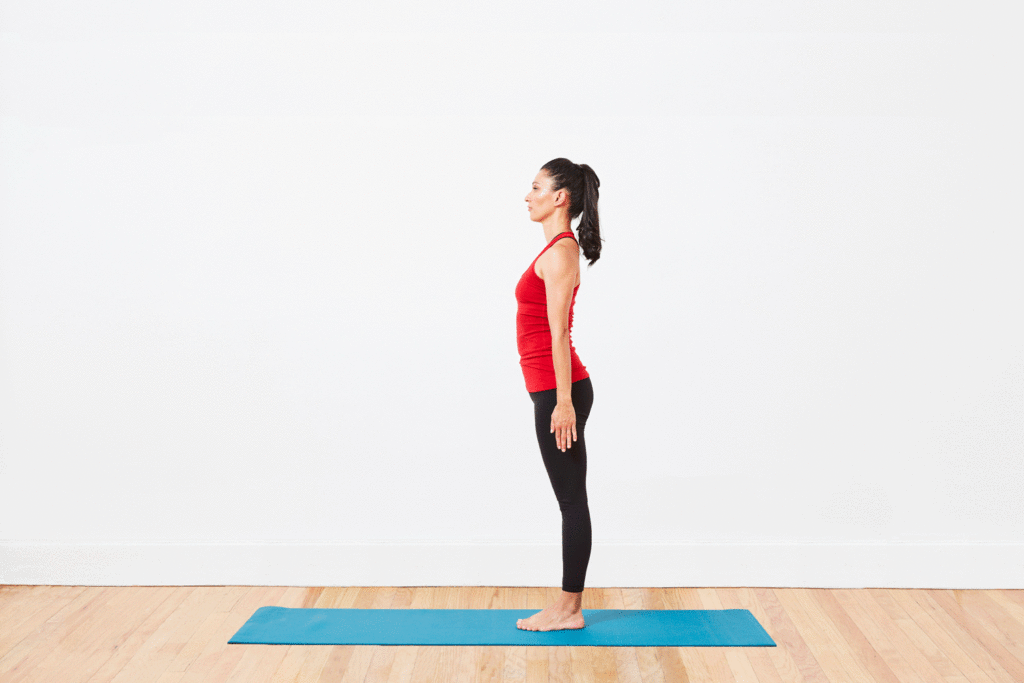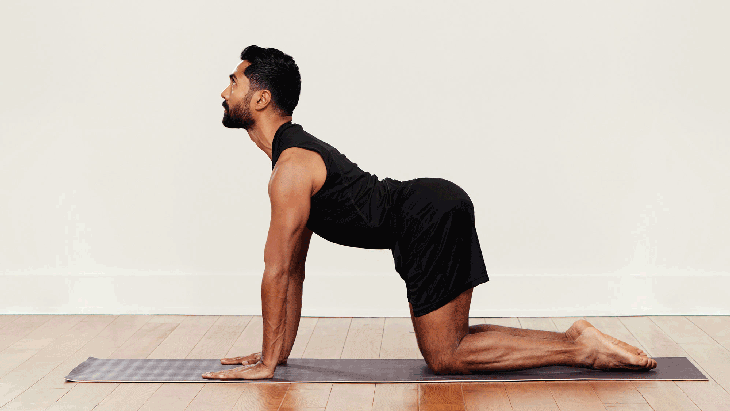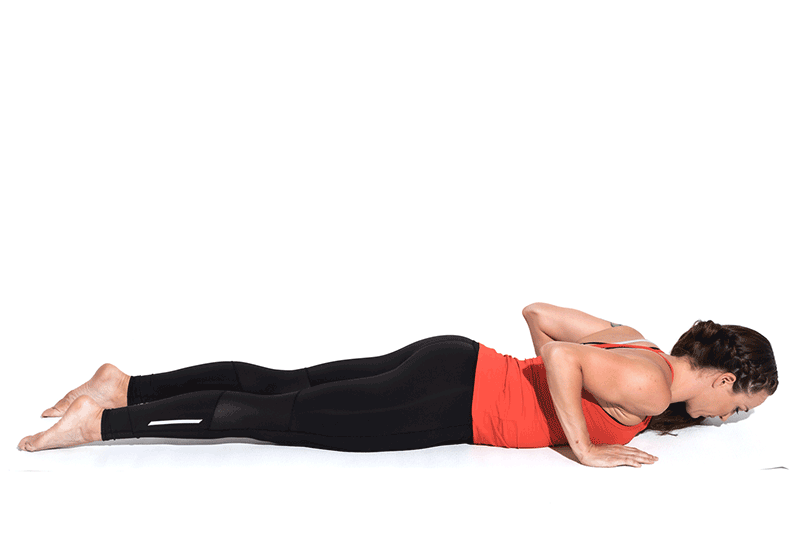Even though Yoga is an ancient practice, its significance and benefits have been proven through scientific studies and trials. Its profundity is evident when we see the smile that it brings to health-conscious people, whether in terms of physical fitness and mental peace or attaining states of consciousness that are higher than the ordinary. Lets learn more about the poses of Yoga for Beginners.
Yoga for beginners is about reconnecting with our inner yogi and reminding us of the classic wonder poses. Our ancient tradition’s great legacy has a multi-faceted impact on us. You become more conscious; in the moment; you have a relaxed frame of mind, and your body becomes more flexible and healthier.
Related Post- Does Yoga helps in Weight Loss?
Five Most Common Yet Effective Poses of Yoga for Beginners
1. Mountain Pose (Tadasana)

In addition to helping with mental concentration, Mountain Pose is one of the most basic yoga postures for newbies to the sport. While assuming this posture, bring awareness to every part of your body. Remember that Tadasana is more than just a simple pose of standing straight.
Also Read- Walking Vs Running Vs Cycling- Which is the best workout for Weight Loss?
How To Do
- Straighten your spine and place your feet firmly on the floor.
- Pull your quadriceps up and your inner thighs in toward your midline while you do this.
- Activate your abdominal muscles.
- Relax your shoulders.
- Then take a deep breath.
- Place your arms vertically next to your torso.
- For 10 seconds, slowly inhale and exhale.
Alignment Tips
- Keep your body straight by keeping your legs and back parallel.
- Look straight forward with a straight chin.
Also Read- Spot Jogging Benefits for Weight Loss
2. Tree Pose (Vrikshasana)

In addition to helping beginners develop physical and emotional stability, Tree Pose is a must-do pose for all new yogis. In addition to strengthening the ankles and knees, this yoga pose helps develop the calves, and abdominals.
How To Do
- From Tadasana, move your weight slightly to your left foot and bend your right knee slightly.
- With your right hand, grab the sole of your right foot and place it on your left thigh.
- Balance yourself by straightening your left leg and keeping your body upright.
- Place your hands in your heart and hold them there.
- As you press your right foot into your inner thigh, use your outer left leg to resist.
- Breathe in and out slowly.
- Change sides by pressing down on one side, then the other.
Also Read- Effective Yoga Poses for Kids for Healthy Lifestyle
Alignment Tips
- Place your foot on the calf side instead of your thigh if it is painful to hold your foot high on the leg (avoid knee as this can induce injury).
- Take a few steps backwards and fix your attention on a point 5 to 10 feet away.
3. Cat/Cow Pose (Chakravakasana)– Yoga for Beginners

As the name implies, this pose is composed of the cat pose and the cow pose. In addition to warming the back and spine, this steady and controlled back and forth movement is an excellent yoga pose for beginners.
Also Read- How to Start with Running?- An absolute guide for Beginners
How To Do
- Beginning on all fours, place a hand and a knee squarely below the shoulders.
- When you exhale, softly bring your chin to your chest and curl your back up into the sky.
- Couple of deep breaths and hold it for a while.
- Inhale, lower your belly toward the ground and lift your gaze as you do so.
- It is recommended that you repeat this sequence 3 – 5 times.
Alignment Tips
- It is essential to keep your wrist crease parallel to the front line of your mat when you are doing this.
- Maintain a healthy balance between your left and right sides of the body.
4. Plank Pose (Phalakasana)

It is known for developing the core muscles, the chest and low back, and the wrists and arms and shoulders. Starting with this position, beginners will build strength and endurance, which will help them prepare for more challenging postures in the future.
Also Read- Effective Exercises to Lose Belly Fat at Home
How To Do
- On all fours, place your wrists directly behind your shoulders. This is the starting position.
- Legs should be lifted till the body is in a straight line.
- Squeeze and tighten your abdominal muscles to create a tightening effect.
- Push your fingertips and palms firmly into the mat with your hands stretched out in front of you.
- Maintain your heels raised as you return to the ground.
- Hold for a total of 10 breaths before releasing.
Alignment Tips
- Keep your hips in a sturdy, neutral position by lifting them up and back.
- Hold your ears away from your shoulders and your focus on the floor at all times.
5. Cobra Pose (Bhujangasana)

Yoga’s Cobra Pose is an important yet compelling position that strengthens the core and opens the chest simultaneously. We utilize this position instead of Upward Facing Dog in early Vinyasa sequences because of its light strain.
Also Read- Simple Yet Effective Yoga Poses for Acidity
How To Do
- To begin with, lie on your stomach flat.
- Place your palms on the ground under your shoulders and bend your elbows.
- Pause for one breath with a neutral neck.
- Take a deep breath in and elevate your chest off the mat, keeping your ribs on the ground.
- Roll your shoulders back and forth, extending your elbows halfway.
- Raise your head gently and look straight ahead.
- Take 3–5 deep breaths and hold them for 3–5 seconds.
Alignment Tips
- Keep your legs engaged and firmly pressed against the mat.
- Keep your neck as long as possible to reduce tension.
- Increase the bend in your elbows by descending closer to the floor if you’re having trouble with your lower back.
Also Read- One Pose to Solve many Problems- Vajrasana Benefits
The Bottom Line- Yoga for Beginners
Regardless of age or fitness level, yoga is an excellent type of exercise. To start at a slower speed, novices should opt for a more uneventful paced lesson. Regular practice will help you strengthen and stretch your muscles and joints and enhance your mind.

